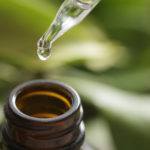How Much Sun Exposure For Vitamin D?
I’m confused about vitamin D and sun exposure. How much sun do we need? I’m fair-skinned and burn easily. I live in Pennsylvania where we don’t get much strong sun in winter.
Andrew Weil, M.D. | May 17, 2010

Our best source of vitamin D is sun exposure. The body synthesizes “D” using ultraviolet (UV) rays absorbed by the skin, and very little sun exposure is needed to provide your body’s needs. Even if you live in an area such as Pennsylvania where you get little strong sun in winter, adequate exposure during the rest of the year will allow your body to stockpile enough “D” to last you through the gray winter months.
My friend and colleague, vitamin D researcher Michael F. Holick, M.D., Ph.D., has just published a valuable book on the importance of vitamin D to health and how you can use diet, supplements and sensible sun exposure to avoid or overcome a deficiency, which we now know is common worldwide. He has developed a formula by which we all can calculate how much sun exposure we need based on skin type and where you live. His book, The Vitamin D Solution (Hudson Street Press, 2010; I wrote the foreword to the book) also includes tables you can use to determine the amount of exposure you need year round. In brief and in general, Dr. Holick advises estimating the time it would take your skin to turn pink in the sun. Then divide that time by 25 to 50 percent, depending on your skin type. So, someone like you who has fair skin, burns easily and lives in Pennsylvania would be advised to spend 20-30 minutes in the sun with your arms and legs exposed (not your face) between the hours of 11 a.m. and 3 p.m. two to three times a week from March through May and September through October but only 15-20 minutes in July and August when the sun in strongest. If you remain outdoors longer than the specified time, apply sunscreen. (Don’t even try to get sun time from November through February; in your area, you won’t get enough UV to help, and you’ll probably get pretty cold outside with bare arms and legs.
If you live in the United States, Canada or the Caribbean, Dr. Holick’s book will tell you exactly how much sun you need depending on your skin type and your location. Those outside North America can consult his illustration of worldwide latitudes to identify which of his tables to use.
Andrew Weil, M.D.









